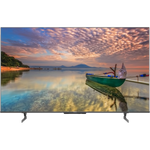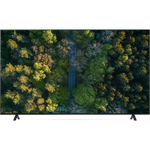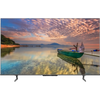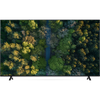A comparison of specs, key information, reviews, and best pricing from top retailers
Last updated -- hours ago | Report incorrect information
What we think

The PerfectRec TV team Learn more
Updated January 10, 2024·
If you prefer overall picture quality, gaming performance, and a great experience in both dark and bright rooms, the Hisense U8H could be the right choice for you, but it is more expensive. However, if cost is a concern and you want a decent TV for watching sports or using as a PC monitor with a wider viewing angle, the LG NANO75 may suit your needs and will save you money, but its picture quality, especially in dark rooms, will not be as good as the Hisense U8H. Give Feedback
this description is based on the product variant with some specs and product variant with some specs. At the time of writing, the variant with some specs cost some dollars and the variant with some specs cost some dollars.
Advantages of the Hisense U8H (LCD)
- Best in class for bright room
- Very good for dark room
- Very good for gaming
- Very good for movies & TV
- Very good for news, talk, & other TV
- Excellent for cartoons & animation
- Good for use as monitor
- Very good reflections
Advantages of the LG NANO75 (LCD)
- Good motion processing
Key differences
Picture Quality
8.4


5.6
7.75/10
CONTRAST
4.97/10
9.1/10
COLOR VOLUME SCORE
5.8/10
miniLED FALD
PANEL TYPE
LED
VA
PANEL SUB-TYPE
IPS
The Hisense U8H (LCD) has very good picture quality, while the LG NANO75 (LCD) has poor picture quality.
Movies & TV
8.2


5.2
7.75/10
CONTRAST
4.97/10
6.8/10
BLACK UNIFORMITY
5.0/10
7.5/10
UPSCALING
7.5/10
Yes
HDR10 SUPPORT
Yes
Yes
HDR10+ SUPPORT
No
Yes
DOLBY VISION SUPPORT
No
The Hisense U8H (LCD) is very good for movies & TV, while the LG NANO75 (LCD) is poor.
The Hisense U8H outperforms the LG NANO75 in watching movies and cinematic TV primarily due to its excellent contrast, effective local dimming, and superior black uniformity which are crucial for dark scene details, whereas the LG NANO75 has lower contrast, no local dimming, and subpar black uniformity that can lead to washed-out images. Additionally, the Hisense U8H offers better colors out of the box and color volume, contributing to a more vivid and accurate picture for cinematic experiences, compared to the LG's good but not as impressive color performance.
Gaming
8.3


5.7
8.3/10
RESPONSE TIME SCORE
6.1/10
7.3/10
INPUT LAG SCORE
10.0/10
3.9/10
MOTION PROCESSING
7.5/10
80.0/100
GAMING LOCAL DIMMING
0.0/100
9.2/10
GAME HDR BRIGHTNESS SCORE
5.7/10
The Hisense U8H (LCD) is very good for gaming, while the LG NANO75 (LCD) is poor.
The Hisense U8H excels in gaming because it has a very good response time and good input lag, which makes it responsive for fast-paced gaming interactions. In contrast, the LG NANO75 has only a fair response time and the best input lag, but its lower refresh rate affects its gaming performance compared to the Hisense U8H.
Cartoons & Animation
9.1


5.9
8.4/10
COLOR GAMUT SCORE
6.5/10
9.1/10
COLOR VOLUME SCORE
5.8/10
9.1/10
SDR BRIGHTNESS SCORE
5.8/10
8.5/10
COLORS OUT OF THE BOX SCORE
7.7/10
8.5/10
GRAY UNIFORMITY
6.0/10
The Hisense U8H (LCD) is excellent for cartoons & animation, while the LG NANO75 (LCD) is poor.
The Hisense U8H is praised for its display of cartoons and animation due to very good colors straight out of the box and an excellent color volume, which ensures vibrant and diverse shades. In contrast, the LG NANO75 struggles in this regard because its colors out of the box are just good, and it has a poor color volume, leading to less impressive and varied colors.
News, Talk, & Other TV
8.8


6.1
9.1/10
SDR BRIGHTNESS SCORE
5.8/10
7.5/10
UPSCALING
7.5/10
The Hisense U8H (LCD) is very good for news, talk, & other TV, while the LG NANO75 (LCD) is only fair.
The Hisense U8H excels in SDR brightness and produces vibrant colors straight out of the box, which benefits watching news and talk shows in various lighting conditions, while the LG NANO75, with poorer SDR brightness and less impressive colors out of the box, is less suitable for such content, especially in well-lit rooms. Additionally, the U8H's upscaling capabilities ensure lower resolution content is displayed clearly, an advantage over the NANO75, as upscaling is crucial for watching standard-definition channels.
Bright Room
9.7


5.8
5.5/10
VIEWING ANGLE
6.8/10
9.1/10
SDR BRIGHTNESS SCORE
5.8/10
9.1/10
HDR BRIGHTNESS SCORE
5.5/10
8.6/10
REFLECTIONS SCORE
7.8/10
The Hisense U8H (LCD) is best in class for bright room, while the LG NANO75 (LCD) is poor.
The Hisense U8H outperforms the LG NANO75 in a bright room because it has a significantly higher SDR and HDR brightness, meaning it can produce brighter images that stand out more in well-lit conditions, and it also has better reflection handling to reduce glare.
Cost
$1,500


$1,350
$500
$1,000
$1,500
$2,000
$2,500
The Hisense U8H (LCD) has a price of $1,500 and the LG NANO75 (LCD) costs $1,350.

Let Us Help Find Your Perfect TV
Find your new TV
Key similarities
Sports
6.5


6.7
3.9/10
MOTION PROCESSING
7.5/10
120Hz
REFRESH RATE
60Hz
7.3/10
INPUT LAG SCORE
10.0/10
7.5/10
UPSCALING
7.5/10
9.1/10
SDR BRIGHTNESS SCORE
5.8/10
Yes
HLG SUPPORT
Yes
The LG NANO75 (LCD) and Hisense U8H (LCD) are both only fair for sports.
The Hisense U8H has better motion processing and response time, making it more suitable for fast-paced sports but struggles with viewing angles and reflections handling in bright rooms. The LG NANO75 offers wider viewing angles and handles reflections well, which is good for group watching in well-lit rooms, but its motion processing and response time are weaker, resulting in possible blur during fast action.
Give feedback
We’re constantly working to improve.
How the Hisense U8H (LCD) and the LG NANO75 (LCD) compare to other TVs
Spec Comparison
| Hisense U8H (LCD) | LG NANO75 (LCD) |
GENERAL | |||
|---|---|---|---|
| Price | |||
$1,500 | $1,350 | ||
Brand | |||
Brand | Hisense | LG | |
Release Date | |||
Release Date | August 3, 2022 | March 5, 2022 | |
Full name | |||
Full name | 75U8H | 75NANO75 | |
Screen Size | |||
Screen Size | 75" | 75" | |
Screen Resolution | |||
Screen Resolution | 4K | 4K | |
TV FEATURES | |||
|---|---|---|---|
Operating System | |||
Operating System | Google TV | webOS | |
Sound Quality Score | |||
Sound Quality Score | 7.8/10 | 6.1/10 | |
NextGen Ready | |||
NextGen Ready | Yes | No | |
HDMI Ports | |||
HDMI Ports | 4 | 3 | |
Coax Ports | |||
Coax Ports | 1 | 1 | |
DISPLAY QUALITY SCORES | |||
|---|---|---|---|
Picture Quality Score | |||
Picture Quality Score | 8.5/10 | 5.7/10 | |
Bright Room Score | |||
Bright Room Score | 9.7/10 | 5.8/10 | |
Gaming Score | |||
Gaming Score | 8.3/10 | 5.7/10 | |
Movies & TV Score | |||
Movies & TV Score | 8.3/10 | 5.3/10 | |
Sports Score | |||
Sports Score | 6.5/10 | 6.7/10 | |
PHYSICAL | |||
|---|---|---|---|
Dimensions w/o Stand (H x W x D) | |||
Dimensions w/o Stand (H x W x D) | 38.1" x 65.9" x 3" | 38" x 66.1" x 2.4" | |
Dimensions with Stand (H x W) | |||
Dimensions with Stand (H x W) | 41" x 65.9" | 40.4" x 66.1" | |
Weight without Stand | |||
Weight without Stand | 81.6 lbs | 69.2 lbs | |
VESA Mount | |||
VESA Mount | 600 x 400 | 400 x 400 | |
DISPLAY | |||
|---|---|---|---|
Color Depth | |||
Color Depth | 10 bit | 10 bit | |
Black Frame Insertion | |||
Black Frame Insertion | Yes | No | |
Auto Low Latency Mode | |||
Auto Low Latency Mode | Yes | Yes | |
Contrast | |||
Contrast | 7.8/10 | 5/10 | |
Local Dimming | |||
Local Dimming | 8/10 | 2.5/10 | |
SOUND | |||
|---|---|---|---|
Speaker Setup | |||
Speaker Setup | 2.1 | 2.0 | |
Speaker Power | |||
Speaker Power | 40 W | 20 W | |
Dolby Atmos | |||
Dolby Atmos | Yes | Yes | |
DTS:X | |||
DTS:X | Yes, Bypass only | No | |
Shopping
Hisense U8H (LCD)
See more
Dig into reviews and images
IGN
Jaron Schneider | January 2023
"Hisense is over here making the best TVs for the majority of average families. U8H is a juiced-up utility knife of a television that manages to do a lot of things pretty well. The brightness this TV is capable of pushing out means I can see everything going on in any video game I’m playing regardless of what time of day it is"
Get a great deal on the Hisense U8H (LCD) or the LG NANO75 (LCD)
About Hisense
Hisense, a Chinese TV manufacturer, entered the US market in approximately 2011 and has since acquired TV divisions from various companies such as Toshiba, Sharp, Hitachi, and NEC. Currently ranking as the fourth largest vendor in terms of sales volume, Hisense aims to capture a wide range of TV budget segments. They offer exceptional value with TVs that often outperform their competitors at similar price points, making them a compelling choice for consumers. In the US, they use Google TV as their smart TV software which provides the largest app selection and a very modern user interface, however it is not as user friendly as the software from other vendors.
About LG
LG, a prominent TV brand from Korea, has played a significant role in popularizing OLED TVs. OLED technology is hailed as the future of TV technology. Their TVs employ WebOS, a proprietary smart TV software that not only offers seamless functionality but also includes gaming-specific features, earning praise from players worldwide. Often regarded as the gateway to unparalleled viewing experiences, LG's mid-range OLEDs come highly recommended, making them a worthwhile investment for those willing to stretch their budget for superior quality.
Give feedback
We're constantly perfecting our model
TV guides you might be interested in
More comparisons for you
FAQs
FAQs about TVs
Why trust us
This information was produced and vetted by the PerfectRec TVs team. We are a product research and recommendation organization that meticulously reviews and evaluates the latest TV information and makes it digestible for you.
By the numbers
385
TVs evaluated
33,110
TVs stats compiled
21
Proprietary TVs ratings developed
120,330
Recommendations made
18,050
Consumer hours saved
About the TV team
Joe Golden, Ph.D
CEO and TVs Editor
Joe is an entrepreneur and lifelong electronics enthusiast with a Ph.D in Economics from the University of Michigan.
Jason Lew
Staff Expert & Software Engineer
Jason is a staff expert and software engineer that has been making laptop recommendations for 7 years and moderates one of the largest laptop subreddits.
Chandradeep Chowdhury
Staff Expert & Software Engineer
Chandradeep is a staff expert and software engineer and expert in televisions and monitors. He’s been making monitor recommendations for ten years.
Jaime Roldán
TVs Expert
Jaime is a Colombia-based TV expert. He is an electronics engineer with 8 years of experience in the telecom sector and has been making TV recommendations for 12 years.







